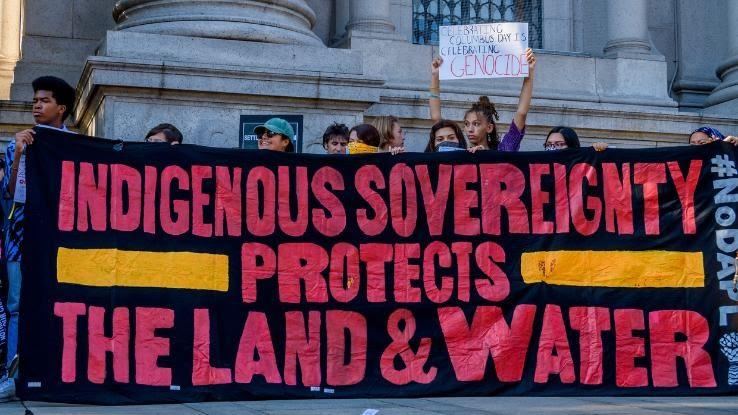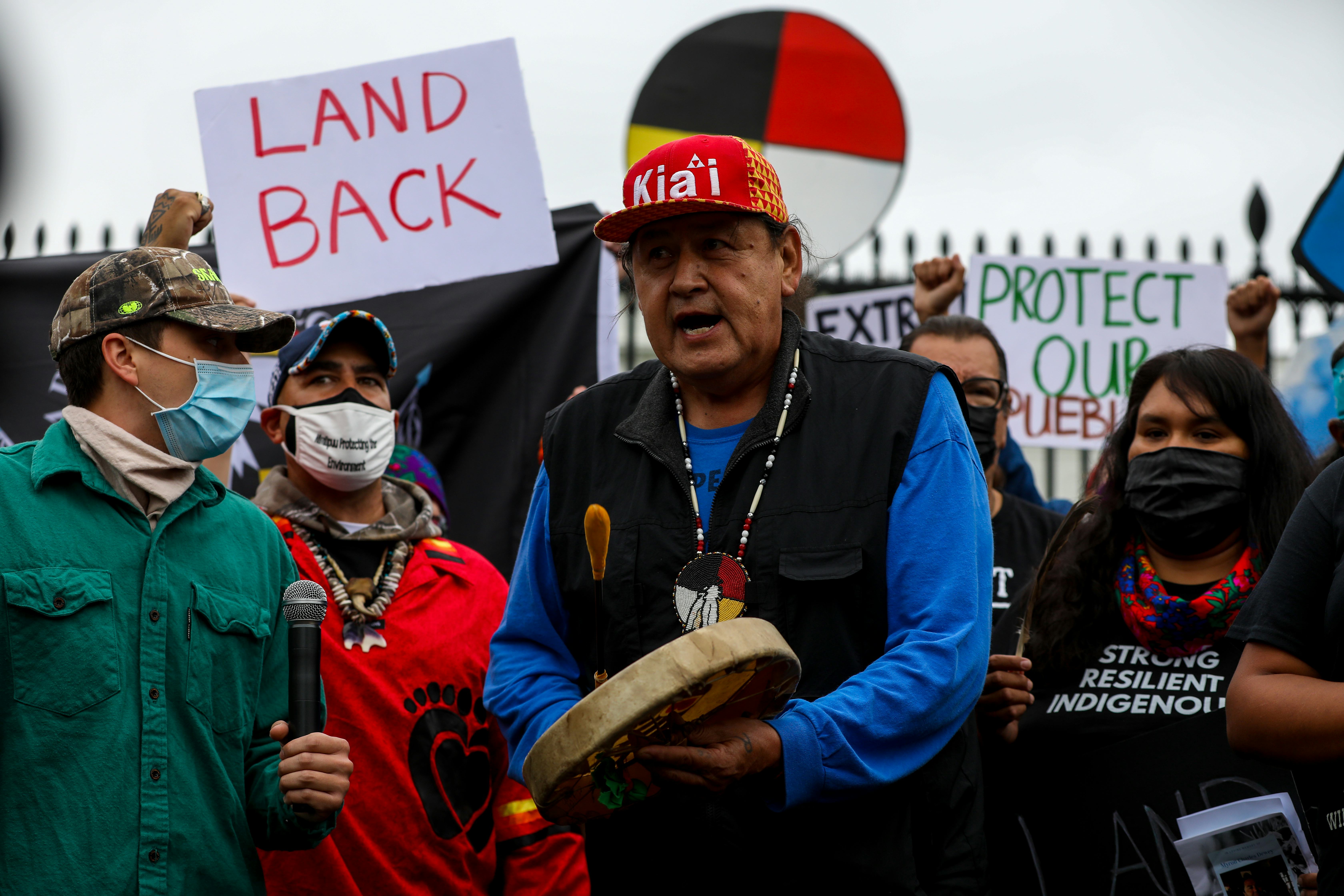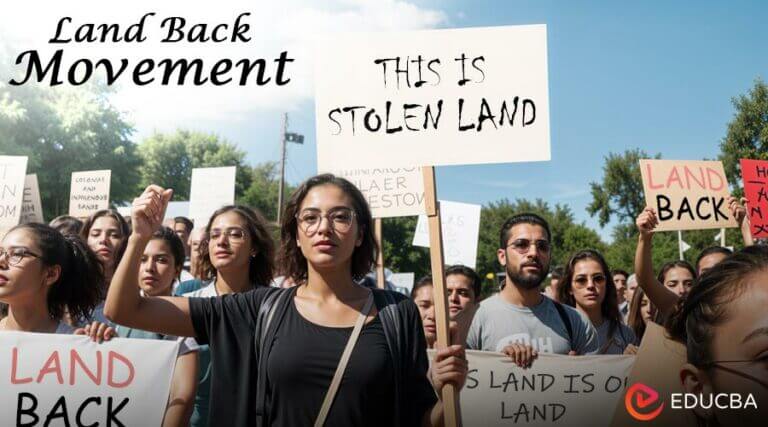
Reclaiming Stolen Ground: Understanding the Global Indigenous Land Back Movement
By [Your Name/Journalist’s Name]
The whisper of the wind through ancient trees, the murmur of a river flowing over ancestral stones, the silence of a forest floor – for Indigenous peoples worldwide, these are not just natural sounds, but the very heartbeat of their identity. For centuries, that heartbeat has been muffled, silenced, or stolen outright. Now, a powerful global resurgence known as the "Land Back" movement is amplifying that sound, demanding the return of ancestral lands and, with them, the inherent sovereignty, cultural vitality, and ecological stewardship that was violently severed by colonialism.

More than just a cry for property, Land Back is a profound and multi-faceted call for justice, reconciliation, and a paradigm shift in humanity’s relationship with the Earth. It seeks to undo centuries of dispossession, broken treaties, and environmental degradation, envisioning a future where Indigenous self-determination leads the way towards a more equitable and sustainable world.
The Genesis of Dispossession: A Brief History of Erasure
To understand Land Back, one must first grasp the colossal scale of the historical injustice it seeks to remedy. The arrival of European colonizers in the Americas, Australia, New Zealand, Africa, and parts of Asia initiated an era of unparalleled land theft, violence, and cultural annihilation. Concepts like "terra nullius" (land belonging to no one) were invented to justify the seizure of vast territories, ignoring the millions of people who had lived on and stewarded these lands for millennia.
In North America, for instance, an estimated 100 million acres of Indigenous land were taken between 1887 and 1934 alone, often through fraudulent treaties, forced removal, and genocidal policies. The Dawes Act in the United States, for example, broke up communal tribal lands into individual allotments, often selling off "surplus" land to non-Indigenous settlers, a policy that fractured tribal governance and severely diminished land bases. Similar patterns unfolded globally, from the British colonial expansion in Australia and New Zealand to the scramble for Africa.
This dispossession wasn’t just about losing physical territory; it was about severing spiritual connections, disrupting traditional economies, eroding cultural practices tied to specific landscapes, and undermining self-governance. Indigenous communities, once self-sufficient and thriving, were relegated to reservations, reserves, or fringe communities, their traditional knowledge suppressed, their languages forbidden. The consequences are still felt today: disproportionate poverty, health disparities, and the ongoing trauma of intergenerational violence.
What Does "Land Back" Truly Mean? Beyond Simple Property Transfer
The term "Land Back" is often misunderstood, sometimes intentionally misrepresented as a demand for all non-Indigenous people to vacate the land. This is a gross oversimplification. While the literal return of ancestral land is a core component, the movement is far more expansive in its vision.
At its heart, Land Back is about inherent sovereignty and self-determination. It’s about recognizing the right of Indigenous peoples to govern themselves, manage their own territories according to their own laws and traditions, and determine their own futures. As Khelsilem, a Squamish Nation councilor, stated, "Land Back is about Indigenous peoples being able to determine how their land is used, and how their people can be prosperous and self-determining."

It encompasses:
- Rematriation: Not just returning land to male-dominated systems, but specifically re-centering Indigenous women’s leadership and traditional ecological knowledge in the care and governance of land.
- Restoration and Healing: Re-establishing Indigenous stewardship practices that have historically sustained ecosystems. Many Indigenous communities possess Traditional Ecological Knowledge (TEK) that is vital for addressing climate change, biodiversity loss, and resource management.
- Cultural Revitalization: Reconnecting communities with sacred sites, traditional food systems, and practices that are intrinsically linked to specific landscapes.
- Economic Justice: Creating pathways for Indigenous communities to build sustainable economies on their own terms, free from exploitative colonial structures.
- Challenging Colonial Narratives: Re-educating the broader public about true history and the ongoing impact of colonialism.
Pathways to Reclamation: How Land Back is Happening
The strategies employed by the Land Back movement are diverse, ranging from legal battles to direct action, and from philanthropic initiatives to government-to-government negotiations.
-
Legal and Treaty Avenues: Indigenous nations are increasingly asserting their rights through courts, demanding the enforcement of existing treaties or seeking redress for historical injustices. For example, in Canada, numerous First Nations are pursuing land claims based on unceded territories or breaches of treaty obligations. In the United States, tribes are fighting to restore trust lands or reacquire ancestral sites.
-
Government-to-Government Negotiations: Some governments are slowly engaging in processes to return land or establish co-management agreements. A notable example is the 1985 return of Uluru-Kata Tjuta National Park to its traditional owners, the Anangu people, in Australia, who then leased it back to the government for joint management. Similarly, in New Zealand, the Māori people have achieved significant land and resource returns through the Waitangi Tribunal process.
-
Conservation and Land Trust Partnerships: Non-profit land trusts and conservation organizations are increasingly partnering with Indigenous groups to acquire and return land. The Sogorea Te’ Land Trust in the San Francisco Bay Area, for instance, is an Indigenous women-led organization that receives voluntary land taxes (Shuumi Land Tax) from non-Indigenous residents to acquire land and facilitate its return to Indigenous stewardship.
-
Philanthropy and Private Land Transfers: Wealthy individuals and foundations are recognizing the moral imperative to support Land Back initiatives. Large tracts of land, sometimes previously owned by private citizens or corporations, are being voluntarily returned to Indigenous groups. This often involves the establishment of Indigenous-led conservation easements or land trusts.
-
Direct Action and Advocacy: Indigenous activists and allies continue to engage in protests, occupations, and public awareness campaigns to pressure governments and corporations. The Standing Rock Sioux Tribe’s fight against the Dakota Access Pipeline, while not directly about land return, brought global attention to Indigenous land rights and sovereignty, galvanizing support for related issues.
-
Co-Management Agreements: While not full land return, co-management agreements allow Indigenous communities to share decision-making authority over lands and resources within their traditional territories, often bringing invaluable Traditional Ecological Knowledge (TEK) to bear on conservation efforts. The Gwaii Haanas National Park Reserve, National Marine Conservation Area Reserve, and Haida Heritage Site in Canada is a successful example of co-management between Parks Canada and the Haida Nation.
Case Studies: A Glimpse into Success and Ongoing Efforts
-
Bears Ears National Monument (USA): In the United States, the Biden administration’s restoration of the Bears Ears National Monument in Utah to its original boundaries in 2021 was a significant win for a coalition of five Native American tribes. Crucially, the monument is now co-managed by the federal government and the Bears Ears Inter-Tribal Coalition, ensuring Indigenous voices are central to its protection and management.
-
Ma’uwi’a (Sequoia National Park, USA): In 2023, the National Park Service returned a 160-acre parcel of ancestral land within what is now Sequoia National Park to the Owens Valley Paiute and Dunlap Band of Mono Indians. This marked the first formal land transfer of a tribal ancestral area within the national park system, offering a powerful precedent.
-
The Mungo Man Repatriation (Australia): While not land, the repatriation of ancestral remains like Mungo Man and Mungo Lady to the Muthi Muthi, Ngyampaa, and Barkindji people in Australia in 2023, after decades of scientific study, underscores the broader rematriation efforts that extend to sacred objects and ancestral human remains, acknowledging their intrinsic link to land and cultural identity.
The Broader Implications: Healing the Land, Healing Ourselves
The Land Back movement holds profound implications not only for Indigenous peoples but for the entire planet. Indigenous stewardship practices, honed over millennia, offer critical solutions to pressing global crises. Research consistently shows that Indigenous-managed lands often exhibit higher biodiversity and better ecological health than lands managed by non-Indigenous entities.
By supporting Land Back, societies can:
- Address Climate Change: Indigenous communities are at the forefront of climate solutions, employing traditional fire management, sustainable harvesting, and deep ecological understanding.
- Protect Biodiversity: Returning land to Indigenous care often means revitalizing traditional conservation practices that protect endangered species and fragile ecosystems.
- Foster Reconciliation: It offers a tangible pathway for non-Indigenous peoples to engage in meaningful acts of reconciliation, acknowledging past wrongs and building a more just future.
- Learn and Grow: It provides an opportunity for all of humanity to learn from Indigenous worldviews that emphasize reciprocity, respect for nature, and intergenerational responsibility.
Challenges and the Path Forward
Despite growing momentum, the Land Back movement faces significant hurdles. Legal complexities, political resistance from vested interests, and economic considerations often stand in the way. Misinformation and fear-mongering also present challenges, requiring continuous education and advocacy.
However, the movement is gaining unprecedented traction. Indigenous leaders, activists, and their allies are working tirelessly to shift public perception, influence policy, and secure concrete land returns. From grassroots efforts to international advocacy, the call for Land Back is reverberating across continents, a testament to the enduring resilience of Indigenous cultures and their unwavering connection to their ancestral lands.
The Land Back movement is more than a slogan; it is a vision for a world where justice prevails, where ancient wisdom guides our relationship with the Earth, and where the stolen heartbeat of the land can finally beat freely once more. It is an invitation to all of us to imagine and build a future rooted in respect, reciprocity, and true reconciliation.


